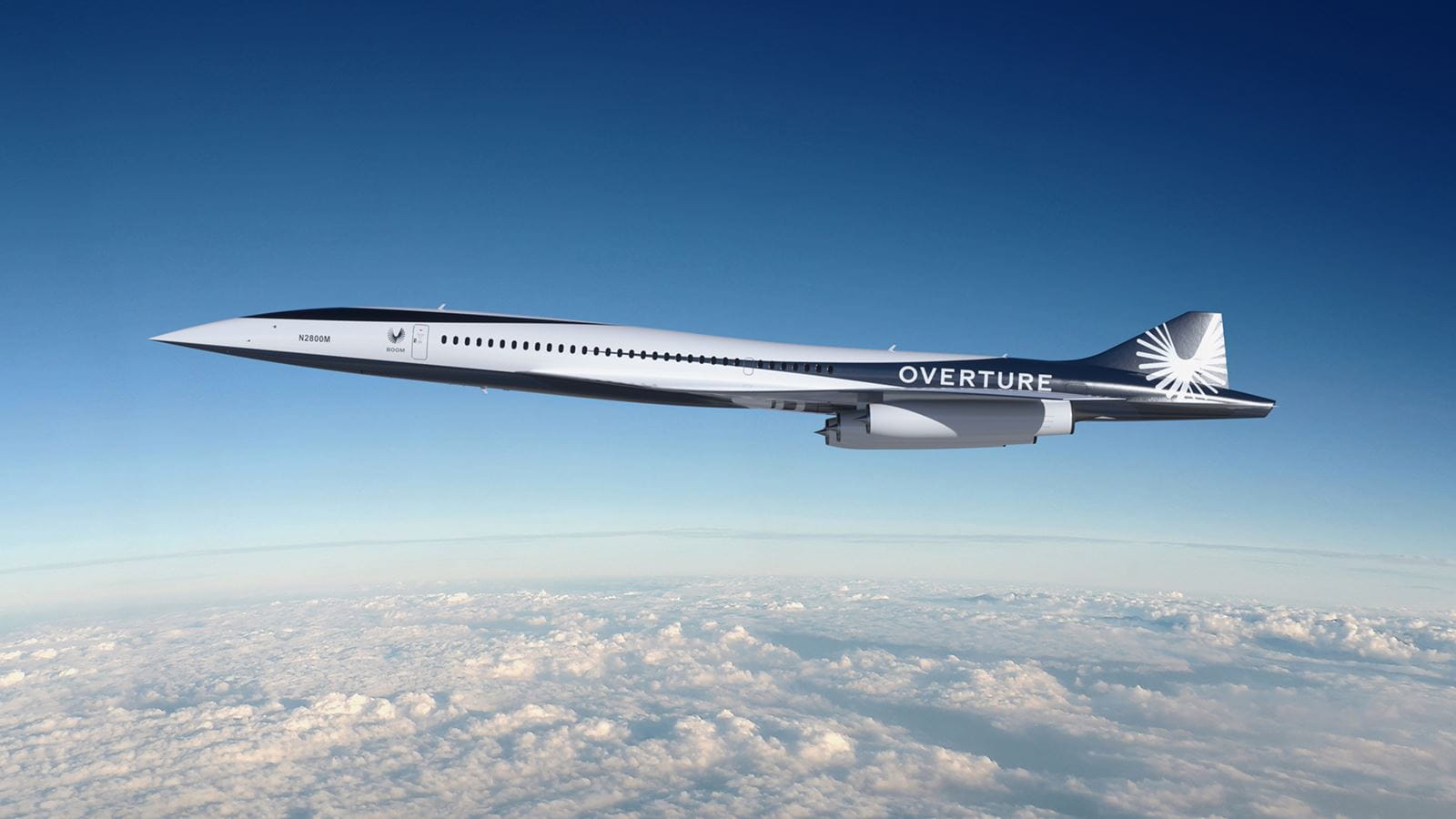Here’s the business case for Boom Supersonic —and a never-before-seen piece of Overture’s design. And why I think there will be over 1,000 Overtures, while there were only 14 Concordes.
Concorde failed because it was simply too expensive to reach a large market. 100 uncomfortable seats, $20k tickets. Even on the most popular route—NY-London—it flew on average half empty. Particularly with 80s/90s travel volumes, it was too big and too expensive.
Shouldn’t a supersonic renaissance start with a small private jet—for the people whose time is most valuable? It almost makes sense—except 80%+ of PJ miles are overland. Until overland supersonic is legalized, there’s scant advantage. This is why every SSBJ project has failed.

OK, so what about a supersonic airliner? Today’s airliners are three-class products—business, premium, and economy… with 200+ seats. With today’s tech, this doesn’t work… can’t get fares low enough to match economy, and there aren’t 200+ business class travelers at a time.

Here’s the secret of international airline economics: the ~40-80 business class flatbeds at the front of the airplane represent more than 50% of revenue and >80% of operating profit. Business class is where almost all the money is!

So what about an all-business-class supersonic airliner? With flights 2X faster, flatbeds wouldn’t be needed and a nice seat will suffice. That’s the basic idea of Overture.

If the flight is twice as fast, passengers won’t need flatbeds. Just like short haul flights, a nice seat will do just fine. Overture packs ~64 great seats into a relatively small supersonic jet. Here’s an old Overture seat concept. Hint: current design is much better.

With 64 seats, fares close to today’s business class (say, $5k), airlines can fill seats easily on many more routes. Overture works economically most anywhere a three-class airplane does. We see 600+ economically viable routes. More if we can also fly supersonic over land.

Concorde vicious cycle: high fuel consumption high fares; high fares + uncomfortable seats + 80s/90s market low demand can’t fill seats fewer flights low airplane utilization. Low utilization means higher unit costs, higher fares, and still lower demand. Oof.

Overture has a virtuous cycle designed around all business class. Intuitively, with roughly the same seat count as subsonic business class, Overture is economically compatible anywhere international business class already works!
We ran a simulation to determine optimal seat count and range… and it confirmed our intuition: 4000+ nautical miles of nonstop range and ~64 seats means profitability at business class fares on hundreds of routes. Longer routes have a refuel—extended-range model comes later.
Our estimates say airlines will need well over 1,000 Overture airliners. And that’s not assuming any supersonic flight over land.

These numbers are probably too low—maybe far too low—because:
- These count Business and First only… but some people who fly Premium will upgrade to supersonic.
- With faster flights, people will travel more and further
- Supersonic overland will happen too
What factors exactly enable lower fares? 1. Improved fuel economy; 2. Increased comfort and reduced seat count, driving demand and load factor; 3. Larger overall market vs. 80s/90s.
#2 and #3 factor most heavily. On net: ~75% lower fares and ~100x market.
All of this is just the starting point. Just as Boeing and Airbus make a whole family of airplanes, eventually we will too. There will be smaller models for private use and larger and longer range ones. And 2- and 3- class airplanes with Premium and Coach cabins.
We called it Overture because an overture is a starting point. And here’s the first ever close look at Overture’s starting point: the largest boarding door ever on a supersonic jet!


